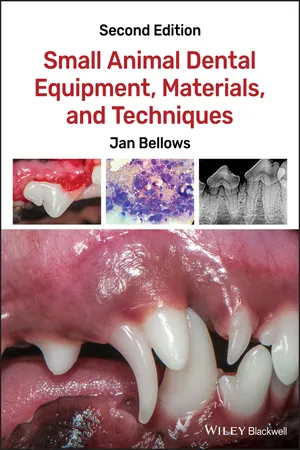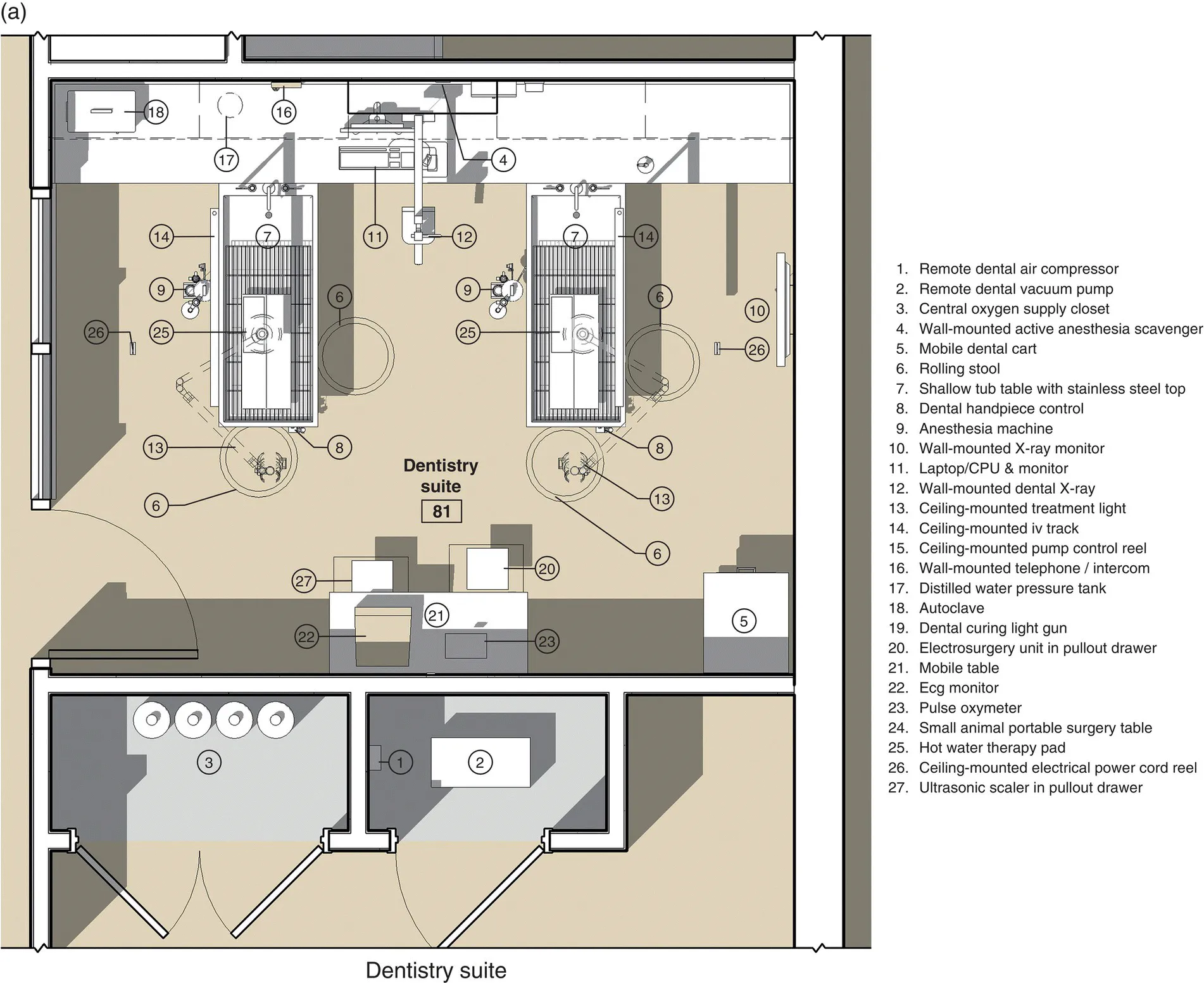
This is a test
- English
- ePUB (mobile friendly)
- Available on iOS & Android
eBook - ePub
Small Animal Dental Equipment, Materials, and Techniques
Book details
Book preview
Table of contents
Citations
About This Book
The second edition of Small Animal Dental Equipment, Materials, and Techniques has been revised and updated to reflect the latest developments in veterinary dental practice.
- Provides a comprehensive resource for integrating dental services into veterinary practice
- Offers valuable advice on selecting dental equipment and materials
- Presents clear descriptions for a range of dental terms and techniques
- Includes a wealth of new images
- Highlights dental information applicable to general practice
Frequently asked questions
At the moment all of our mobile-responsive ePub books are available to download via the app. Most of our PDFs are also available to download and we're working on making the final remaining ones downloadable now. Learn more here.
Both plans give you full access to the library and all of Perlego’s features. The only differences are the price and subscription period: With the annual plan you’ll save around 30% compared to 12 months on the monthly plan.
We are an online textbook subscription service, where you can get access to an entire online library for less than the price of a single book per month. With over 1 million books across 1000+ topics, we’ve got you covered! Learn more here.
Look out for the read-aloud symbol on your next book to see if you can listen to it. The read-aloud tool reads text aloud for you, highlighting the text as it is being read. You can pause it, speed it up and slow it down. Learn more here.
Yes, you can access Small Animal Dental Equipment, Materials, and Techniques by Jan Bellows in PDF and/or ePUB format, as well as other popular books in Medicine & Veterinary Medicine. We have over one million books available in our catalogue for you to explore.
Information
1
The Dental Operatory
The dental operatory is the central point where patient, veterinarian, and staff come in contact with equipment, materials, instruments, and techniques necessary to diagnose, treat, and prevent dental disease (Figures 1.1 and 1.2). The challenge is to provide an efficient area for the use and storage of dental supplies, instruments, powered equipment, radiography unit(s), computer(s), suction, illumination, general anesthesia, monitoring devices, as well as a comfortable and safe place for the dental assistant(s) and practitioner(s) to treat patients. To avoid injury and aid efficiency, every effort should be made to decrease floor‐based equipment (dental delivery systems, anesthesia delivery units, dental X‐ray generators, and intravenous fluid stands).

Figure 1.1 Author's multiple station dental operatory in use.


Figure 1.2 (a and b) Dentistry suite.
Source: Courtesy of Warren Chase Freedenfeld, AIA, Rauhaus Freedenfeld & Associates.
Space
If the practitioner has the luxury of planning the dental operatory versus retrofitting an already built area, an 8‐ft by 10‐ft area should be the minimum floor space allocated for one table. A 12‐ft by 15‐ft space is adequate space for at least two or more tables, storage, anesthesia, and a dental X‐ray unit.
The number of operatory tables used for dentistry in a practice often is what limits the amount of dentistry that can be performed. “Dentistry” no longer is an hour or less procedure where primarily calculus (tartar) and plaque are removed from tooth crowns. The comprehensive oral prevention, assessment, and treatment (COPAT) visit includes dental scaling, polishing, irrigation, full‐mouth intraoral radiographs, and care to treat pathology uncovered during the assessment. The COPAT visit commonly takes two hours or more to complete. Ideally two or three tables should be planned – one used for patients going under anesthesia, teeth cleaning, and diagnostics, while the other one or two used for dental therapy (Figure 1.3).



Figure 1.3 (a) Two‐operatory table setup.
Source: Courtesy of Dr. Susan Crowder.
(b) Two‐operatory table setup.
Source: Courtesy of The Animal Medical Center in New York City, note all support equipment off the floor.
(c) Author's four‐table dental operatory (All Pets Dental, Weston, Florida).
The dental operatory should not be located in the same room used for general surgery or surgical pack preparation to protect from contamination of the surfaces through ultrasonic aerosolization.
When a veterinarian works alone (two‐handed dentistry), considerable time is spent charting, acquiring instruments, materials, and equipment while the patient is anesthetized. Four‐handed dentistry (Figure 1.4a), which is commonly practiced in human dentistry, engages a dental assistant who helps in charting and envisages needs, handing over the instruments and materials in a timely manner. In veterinary dental practice, the patient also must be monitored while anesthetized. Six‐handed dentistry includes the practitioner, a dental assistant, and an anesthesia‐monitoring assistant, increasing the efficiency of dental procedures performed, often decreasing the anesthetic time (Figure 1.4b).

Figure 1.4 (a) Four‐handed dentistry.
Source: Courtesy of Dr. Susan Crowder.
(b) Six‐handed dentistry.
Source: Courtesy of Dr. Brook Niemeic.
Electricity, Water, and Drainage
Multiple electrical grounded 110‐V receptacles are recommended to power the delivery system, light curing unit, ultrasonic scaler, illumination source, computer and screens, monitoring equipment, and thermal control unit. Monitoring equipment may require a dedicated circuit to prevent interference from the ultrasonic scaler. Three four‐plug grounded outlets are usually sufficient for each operatory table.
Water is dispensed under pressure from the high‐speed delivery system to clear debris and prevent heat damage to surrounding tissue generated by drilling and to remove debris. A filter is recommended to decrease the sediment thereby increasing the efficiency and the life of dental handpieces. Distilled water can be used in stand‐alone units or obtained from a distiller and pumped directly into the delivery sy...
Table of contents
- Cover
- Table of Contents
- About the Author
- Foreword
- Preface
- Acknowledgements
- 1 The Dental Operatory
- 2 Equipment, Instruments, and Materials for Operative Dentistry
- 3 Oral Anatomy for the General Practitioner
- 4 Dental Radiography
- 5 Charting
- 6 The Comprehensive Oral Prevention, Assessment, and Treatment Visit
- 7 Oropharyngeal Inflammation
- 8 Tooth Resorption
- 9 Oral Trauma
- 10 Oral Masses
- 11 Occlusal Disorders, Extra Teeth, and Missing Teeth
- Glossary
- Index
- End User License Agreement